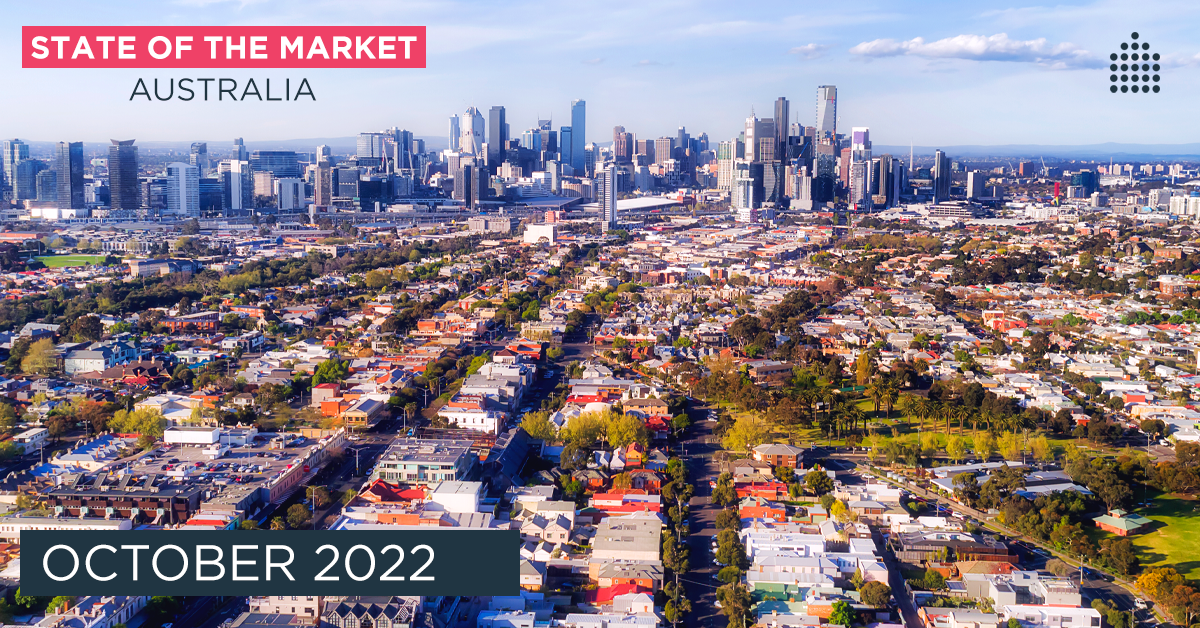The current state of the market
Housing prices posted further declines in the month of September, as the Reserve Bank of Australia (RBA) continued to ratchet up interest rates.
CoreLogic’s national Home Value Index (HVI) fell 1.4% in September, for slowing downwards momentum compared to the decline of 1.6% in August.
The decline in Sydney eased from -2.3% in August to -1.8% in September, while in Melbourne they edged from -1.2% to -1.1%, and in Brisbane from -1.8% to -1.7%.
September marks the fifth consecutive month that CoreLogic’s nationwide home value index has posted a decline.
Construction costs continue to rise
Australia’s construction costs continue to rise at record rates. CoreLogic’s Cordell Construction Cost Index (CCCI) for Q3 2022 showed national residential construction costs increased at a record rate in the year to September 2022, the highest annual growth rate, excluding the period impacted by the introduction of GST (10.2% over the year to March 2001). According to the national CCCI, residential construction costs increased by 11.0% over the 12 months to September, exceeding the 10% annual rise recorded over the 12 months ending June 2022.
CrowdProperty Australia CEO David Ingram said construction costs were still an issue in Australia.
“Contraction of supply of softwood following the bushfires and high lumber prices overseas being very attractive to our exporters has contributed to the well publicised pressures on the supply chains. Although indications overseas are that the worst of the increases are perhaps now behind us as supply chains open up,” Ingram said.
“It’s also important that the construction sector — in particular the home building sector — and finance sectors, do not conflate the cost of living crisis with materials cost inflation as a core reason to not support new home building.”
RBA eases its rate hikes
The easing pace of declines in nationwide housing prices coincides with the RBA’s decision to trim the scale of its rate hikes.
On 4 October RBA governor Philip Lowe announced it would raise the target cash rate by 25 basis points, below a widely expected 50 basis points. This boosted the morale of the market in general, driving a more than 3.8% intraday rise in the ASX 200. Prior to October, the RBA implemented a string of four consecutive 50 basis point hikes from June to September, in addition to a 25 basis point increase in May.
Comments from industry
Rob Flux, developer and educator from the Property Developer Network, said that investors should not view the reduction in the RBA’s rate hike as an automatic cause for optimism.
“Tapering the rate hikes is saying we want to take the foot off the gas, but we still want you to be careful,” Flux said.
“It’s really solidifying what the RBA was trying to do, which was to slow us down.”
Jane Slack-Smith, Director of Investors Choice Mortgages and Your Property Success education, says investors should keep a close eye on the signals sent by the RBA’s next few rate hikes — particularly given that the property market is heading into the quiet Christmas season and the RBA takes a break in January.
“If we do get another 25 basis point increase, that will start confirming for people that there are reasons to be optimistic going ahead, and that we’ve actually come through the worst of it,” she said.
“I don’t think we will have full confirmation however until the RBA meets again in February, because that’s when we will see what has come of their interest rate changes… it takes at least two to three months for them to have an impact on the economy.”
Industry sees opportunities during Christmas
While there is the possibility that the RBA will continue to ease its hikes at the start of 2023, though much will depend on inflation. The housing market is still suffering as a result of higher interest rates, with mortgage-borrowers especially hard hit.
This could provide investors with solid opportunities for property bargains, particularly during the slow Christmas season.
“Joe Public’s hip pocket is starting to hurt, and there are going to be people who are in financial difficulty,” Flux said. “As they start to enter financial distress, there will be bargains.
“If they are in a hurry to sell, given that we are coming into Christmas and there are hardly any property transactions at the moment, it will be possible to negotiate on really good terms.”
Slack-Smith said that structural factors point to a rebound in the Australia property market in 2023. These structural factors include the return of inbound immigration after the lifting of Covid travel restrictions, and the need for the RBA to pivot on rate hikes eventually.
“Some economists are talking about interest rate cuts in 12 months time, as well as pressure on rental properties that will increase property prices,” she said.
“For this reason, the people buying over the next six to 12 months will be buying well and establishing wealth for the future.”
CrowdProperty provides fast, simple and transparent property project finance for property professionals, learn more.
Contributors
Jane Slack-Smith is a respected author, media commentator and property coach. Jane has been named one of the Top 10 Property Experts by Money Magazine, one of the Top 4 Financial Influencers by Qantas and has been awarded the Australia’s Mortgage Broker of the Year (twice!).
Rob Flux is the owner and founder of Property Developer Network, the largest national network of novice developers and renovators in Australia with a combined community of over 15,000 people.
